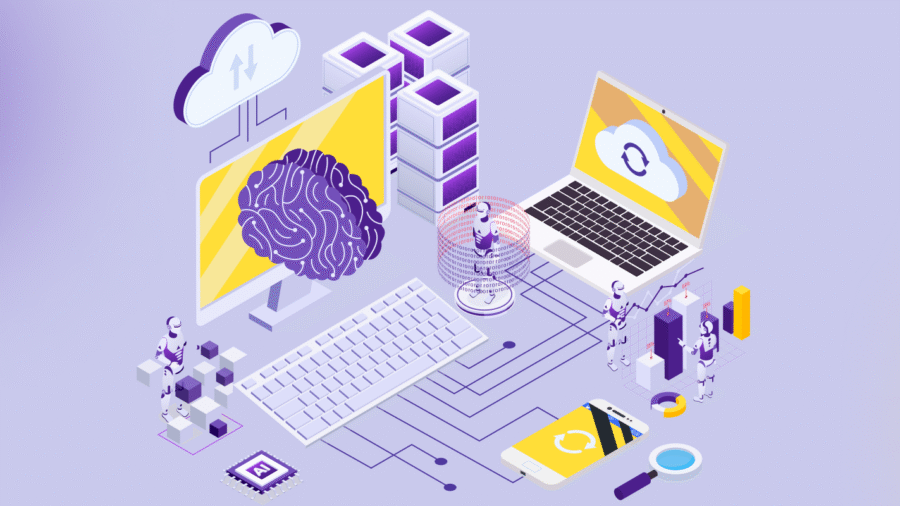As modern software systems grow in complexity, scale, and ambition, so does the pressure on engineering teams to deliver faster, smarter, and with fewer resources. Traditional approaches—relying on static tooling and manual analysis—are buckling under the demands of today’s data-rich, real-time environments. In response, a new paradigm is emerging: agentic AI. Unlike conventional machine learning models, agentic AI systems operate with autonomy, adaptability, and decision-making capacity, ushering in a new era of data-driven software engineering.
This shift is not just about automation—it’s about empowerment. Agentic AI has the potential to fundamentally redefine how developers write, debug, optimize, and maintain code. When fused with real-time data analysis, these intelligent agents can act as active participants in the software development lifecycle, enabling teams to scale their work smarter—not just harder.
Table of Contents
What Is Agentic AI?
Agentic AI refers to systems that possess goal-directed behavior, proactive decision-making capabilities, and contextual awareness. Instead of waiting passively for input, these AI agents can initiate tasks, monitor outcomes, learn from feedback, and adapt strategies over time. Think of them as intelligent collaborators—ones that not only assist but also anticipate and evolve alongside data engineering teams.
Unlike rule-based bots or reactive assistants, agentic AI frameworks can prioritize tasks, identify patterns in noisy data, explore different optimization paths, and even negotiate trade-offs. For example, an agent might identify a recurring performance bottleneck, trace it back to a problematic commit, and suggest a fix that balances performance with code readability—all without human prompting.
Why Data-Driven Engineering Needs Intelligence, Not Just Automation
The core principle of data-driven software engineering is simple: use empirical data to guide development decisions. Logs, telemetry, bug reports, test results, and production metrics all serve as signals. However, the real challenge lies in making sense of this ever-expanding ocean of information.
Human engineers struggle to process vast datasets, spot anomalies across distributed systems, or maintain situational awareness amid rapid deployments. Static dashboards and manual query tools have their limits. This is where agentic AI excels.
By continuously ingesting real-time data streams, AI agents can surface insights faster than any human could. They can evaluate performance trends, identify early warning signs of regressions, or suggest architectural changes before they become urgent. In essence, these agents act as data-native engineers—constantly learning from and adapting to their environment.
Use Cases: Agentic AI in Action
Let’s break down some specific applications where agentic AI is already transforming software development.
1. Automated Code Reviews with Contextual Awareness
Rather than scrutinizing every trivial style discrepancy, agentic AI reviewers leverage the knowledge of a team’s coding conventions, gaining insight into the underlying intent behind the changes made. They hone in on significant issues, filtering out the noise to deliver focused feedback. These intelligent reviewers offer context-aware suggestions that resonate with the intricacies of business logic and the broader framework of system architecture, ensuring that their guidance is not only relevant but also impactful.
2. Self-Healing Infrastructure
In the dynamic world of DevOps, intelligent agents serve as vigilant sentinels, continuously monitoring the pulse of infrastructure performance. With keen eyes, they detect subtle anomalies that could signal trouble ahead, then spring into action with remarkable agility. Imagine them swiftly identifying memory leaks within specific containers, gracefully rolling back deployments that falter, or automatically scaling services to meet the surging demand during peak traffic—executing these critical tasks seamlessly, all without a moment’s delay for human intervention. Their proactive intelligence transforms the landscape of infrastructure management, ensuring smooth operations in an ever-evolving digital environment.
3. Real-Time Root Cause Analysis
Debugging distributed systems can often feel like embarking on a quest to find a needle hidden deep within a vast haystack. With its remarkable capabilities, Agentic AI meticulously traces performance issues across a complex web of microservices, seamlessly correlating logs with user interactions and behaviors. It skillfully identifies the most likely root causes, illuminating the path to resolution. This innovative approach significantly slashes the mean time to resolution (MTTR), enabling a swift restoration of system stability and harmony.
4. Optimization of CI/CD Pipelines
By analyzing historical build data, AI agents can predict flaky tests, recommend pipeline optimizations, and reduce deployment latency. Over time, they learn how to reorder tests for efficiency or allocate compute resources more effectively.
5. Intelligent Feature Flag Management
In feature-driven development, toggling the right flags at the right time is critical. Agentic AI can monitor user interactions and system feedback to determine when to roll out or roll back features, ensuring smoother releases and better user experiences.
The Power of Data-Centric Agents
One of the most exciting aspects of agentic AI is its tight integration with live data. Imagine an agent embedded in your software delivery pipeline, continuously learning from logs, telemetry, and business metrics. It doesn’t just react to data—it acts on it.
This concept is already gaining traction through platforms focused on real-time analytics and event streaming—such as Redpanda, a high-performance streaming data platform that provides the low-latency infrastructure needed for autonomous AI agents to act in real time. Systems like enterprise agentic platforms enable developers to integrate with real-time data without the latency associated with traditional brokers. When paired with agentic AI, the result is an intelligent feedback loop—where insights are generated, tested, and implemented dynamically.
This interplay between streaming data and autonomous intelligence is what enables software teams to scale smarter. Instead of being overwhelmed by signals, engineers are supported by AI partners who help prioritize work, mitigate risks, and amplify productivity.
Challenges and Considerations
Despite its potential, agentic AI isn’t a silver bullet. It introduces new challenges that teams must address thoughtfully:
- Trust and Explainability: Developers need to understand why an agent is making certain decisions. Black-box systems can create friction and resistance.
- Security and Permissions: Agents with access to live codebases or Infrastructure must operate within clearly defined boundaries to avoid unintended consequences.
- Human Oversight: AI should augment, not replace, human judgment. Ensuring a healthy collaboration between agents and engineers is key.
- Data Quality: Poor input leads to poor output. Maintaining clean, consistent, and relevant data sources is critical for agentic systems to thrive.
Looking Ahead: The Future of Agentic AI in Engineering
The world is entering a new phase where software systems are not just built with AI, but alongside it. As agentic models become more sophisticated, their integration into the development lifecycle will deepen. Future agents might:
- Act as persistent “junior developers,” assigned to specific services or modules.
- Manage code evolution across time, automatically refactoring to maintain architectural integrity.
- Run speculative simulations to evaluate architectural trade-offs before changes are committed.
At the organizational level, agentic AI can enable a shift toward continuous optimization, where every piece of code, every deployment, and every user interaction contributes to an evolving, self-improving system.
Final Thoughts
Scaling software isn’t just a question of hiring more engineers or adding more servers. It’s about working smarter—with tools and processes that adapt as fast as the systems they support. Agentic AI brings a fundamentally different approach: one that sees software development not as a static task but as a dynamic, intelligent process fueled by data.
As engineering teams integrate intelligent agents into their workflows, the role of reliable, high-throughput streaming platforms like Redpanda will become increasingly essential in ensuring AI decisions are driven by the freshest, most relevant data available.
By embracing agentic AI in data-driven engineering, teams can move beyond automation and into a realm of true augmentation—where AI acts as a proactive partner, enabling engineers to focus on creativity, design, and innovation. In that smarter, faster, data-native future, success won’t be measured by how much you scale—but how intelligently you do it.









![Detailed Cross-Platform App Development Guide: [2025]](https://cognovision.com/wp-content/uploads/2025/05/Detailed-Cross-Platform-App-Development-Guide-900x506.png)
